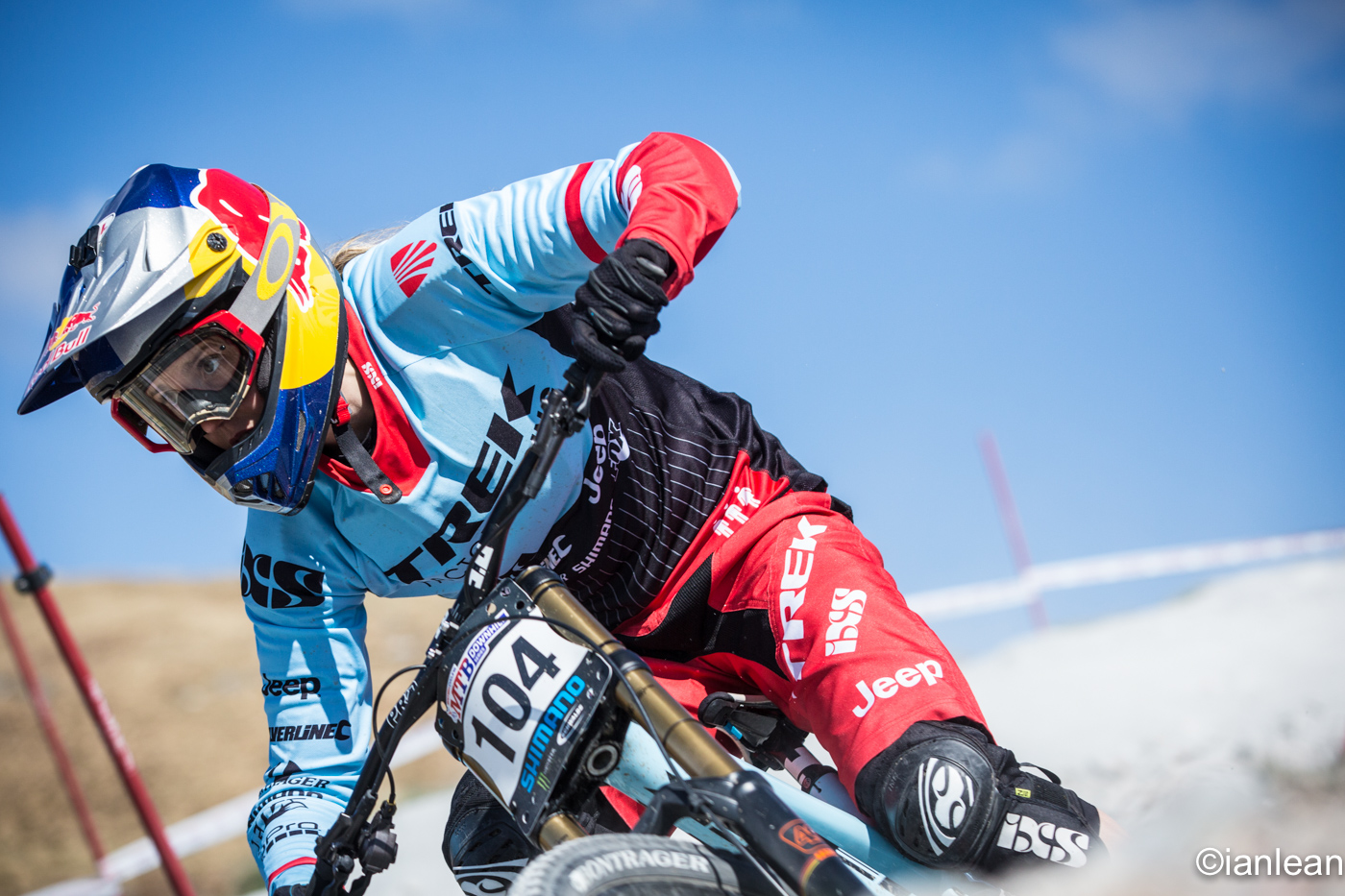After Lourdes, Pete delves into the book of common sense and cynicism about the 29er-heavy coverage from the holiest of World Cups.
Anyone that follows the World Cup circus and the inevitable excitement that it invokes in mountain bike fans can’t help but have noticed that coverage was very much skewed towards the size of the hoops bolted to triumvirate of bikes.

Stop. Let’s back pedal a touch…
The arguments surrounding wheelsize and their demonstrable and unequivocal benefits regards a certain riding situation are far from clear, with there being as many variables to the weather, the track and the rider themselves as to the bike, of which the wheel is only a part.
It seems to me slightly incredulous the amount of coverage that the remainder of the mountain bike media poured on Santa Cruz’s choice to race 29″ wheeled V10s at the opening round of the UCI Downhill World Cup in Lourdes this past weekend.

What did we learn?
We learned that the mountain bike media has done nothing to dampen the raging inferno that is the wheelsize debate, when evidence from the same race indicates that in the grand scheme of things, it makes very little difference. We also learned that media outlets like to jump on something fairly innocuous in the same way mainstream media latches onto minor incidents at the expense of all other news.
Greg Minnaar seems fairly convinced of the benefits of the larger wheel, but then he’s won everything there is to win on smaller wheels. Why the change of heart? Surely a pro of his calibre would have investigated this tool to increase his winning potential years ago, not only when 29ers were already proven in road, cross country and more recently, enduro?

Let’s examine the facts shall we?
The top 10 men in qualifying at Lourdes were separated by 3.1 seconds. Only three of these rode 29ers. While Loris Vergier did indeed take the top spot, with his team mates close behind in 3rd and 6th, it’s seems hard to believe that with both Vergier and Shaw’s 2016 race pace and results steadily rising through the year, that their qualifying success can be attributed to wheels alone.
The Santa Cruz V10 has already proven it’s efficiency on every type of track, and again, it’s not wholly surprising that Shaw, already a V10 rider has adapted to the bigger wheels well after a winter of testing. Vergier is often overshadowed by his compatriot Bruni, but is clearly an excellent bike handler and racer on an upwards trajectory.

Finals day was marred by the weather, but again, you can look at the facts to deduce a few things. Alex Fayolle’s winning run was on 27.5″ wheels and on the same second as Vergier’s. A 3:52. A full 13 seconds quicker than his qualifying run and on small wheels, so what’s all the excitement about?
Arguably the real winner at this race is Gee Atherton. Qualifying 12th, he was in the midst of the storm that descended on the last 15 and managed to bag himself an 8th place finish despite this. He was also on 27.5″ wheels.

With the advent of a 29″ Session doing the rounds, it seems somewhat unbelievable that Atherton Racing wouldn’t have been testing this over the winter, and if so, any gains to come of it would surely be pounced upon. This can also be said of Gee’s younger sister, the most dominant downhill mountain biker of the present and doing a very good Anne-Caro impression as far as winning is concerned.
Let’s go back to margins in qualifying for a second. 3.1 seconds. That is something to the tune of Brook MacDonald pulling up off the metal bridge after the last turn as Vergier crossed the line, with another 8 riders half-car-ing each other in between.
What does this prove?
It’s still tight at the top. Fast guys still go really feckin’ quick regardless of the weapons beneath them.
If you look at this objectively, it makes sense for Santa Cruz to make more 29ers, as they have been doing over the last few years. It makes sense economically and logistically and the most cynical of minds ,might just put the whole thing down as nothing more than a marketing exercise.

A French rider, Alex Fayolle, was the first French rider to win on home soil since Tailleffer in 1998. Regardless of the weather, you still have to be fastest on the day, and 2017 sees a new rider with a World Cup win to his name, something this sport has lacked of late. That in itself should be worthy of more mention than wheels. Rachel Atherton extended her winning streak, but by a more modest margin than usual, something that seemed to pass most people by.
Nothing has changed other than one team’s choice to run a wheelsize that is different to everyone else’s. Margins at the top would be just as tight as last year, and it will always remain that way.



